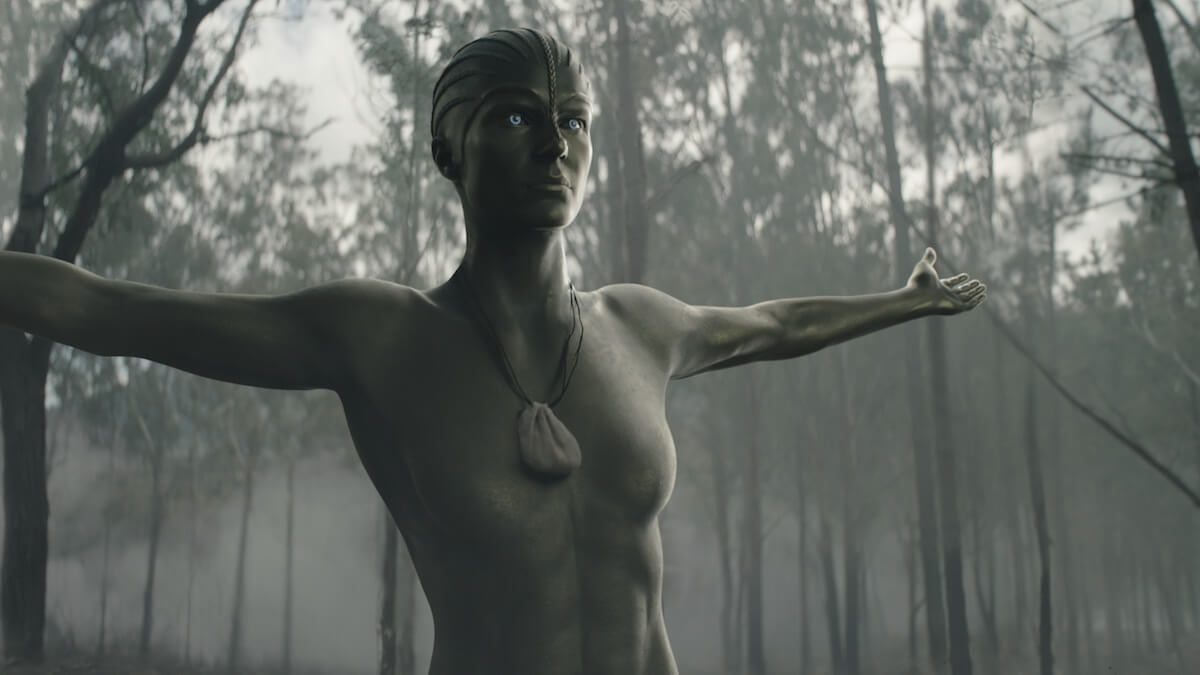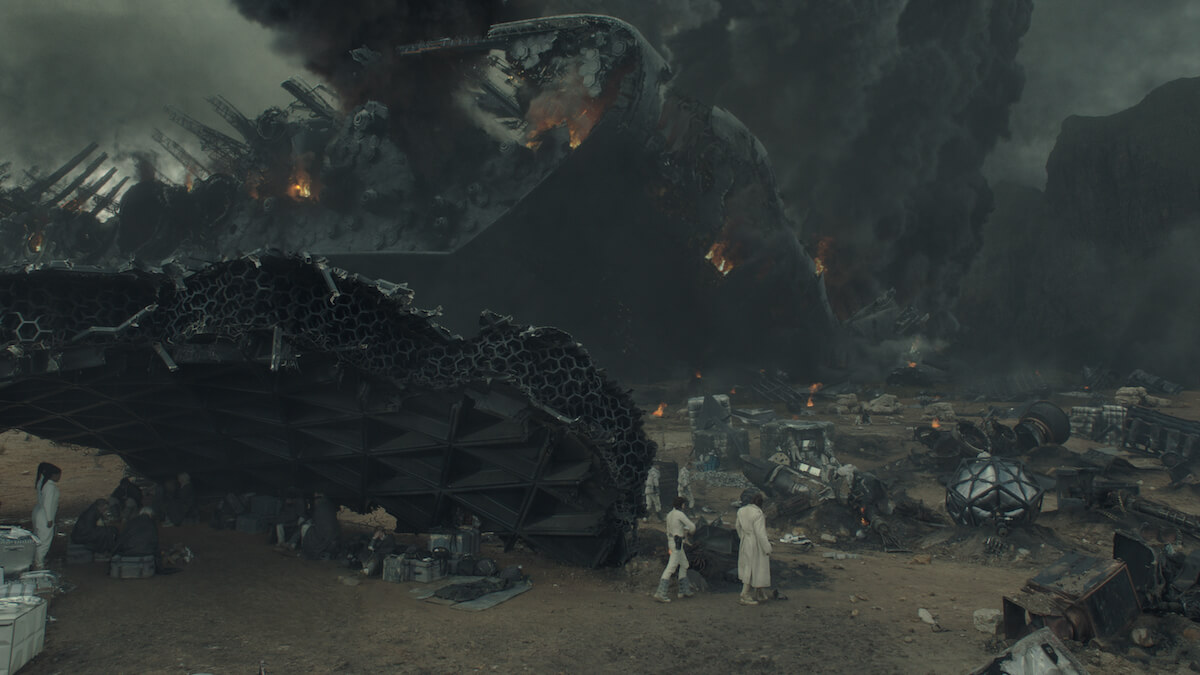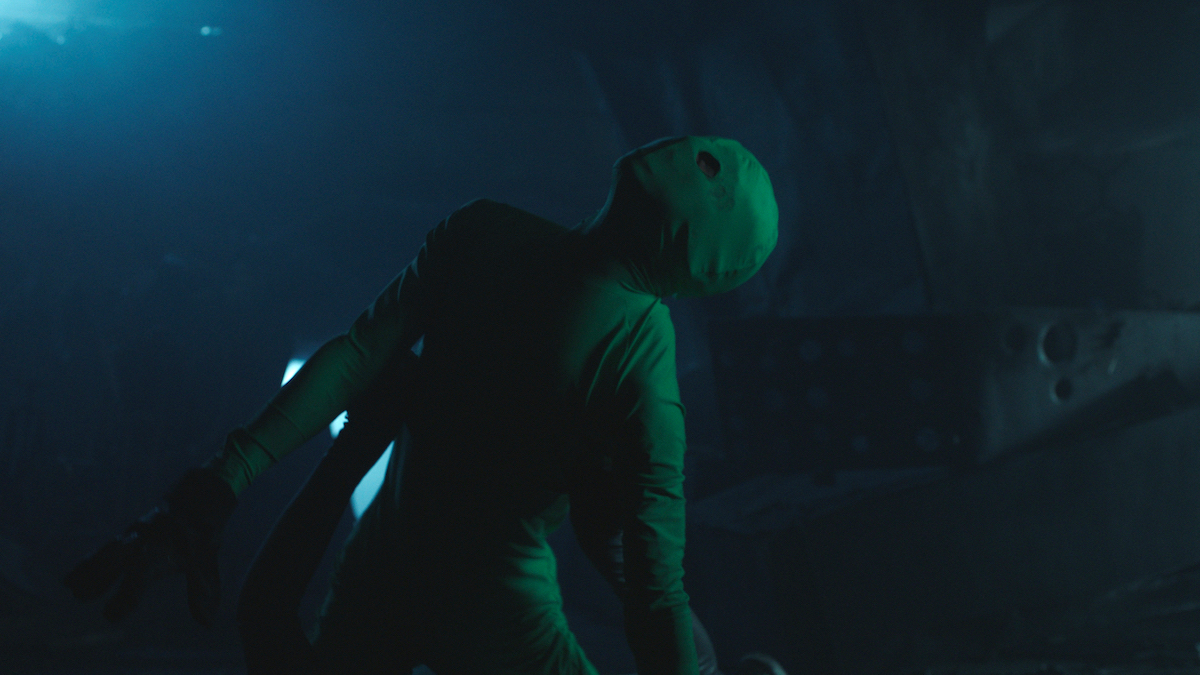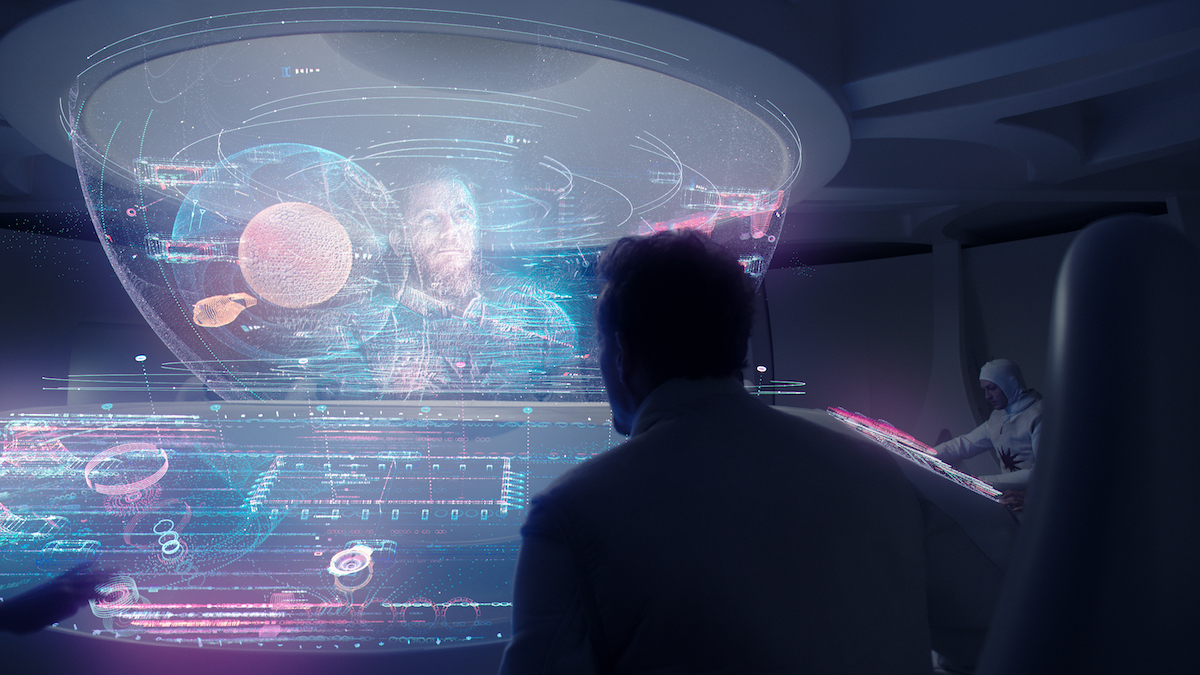Raised by Wolves: Behind the scenes of Ridley Scott’s epic sci-fi series
Veteran visual effects maven Raymond McIntyre Jr. charts his journey from the earliest days of the industry to managing 12 global vendors on Ridley Scott’s Raised by Wolves. Read on to discover how Raymond used cineSync to source, organise, and collaborate with each vendor, and how they united to build the operatic effects of Scott’s mind-bending sci-fi.
Blade Runner, Gladiator, The Martian: Ridley Scott’s renown as a Hollywood film director is well documented. As a director, he has forged some of the most impactful scenes in cinema since filmmakers set the first movie camera to ‘record’.
Ridley Scott’s career, however, was launched through a different medium: television. The director honed his filmmaking skills in the 1970s and 80s by making fantastical and surreal mini-films for commercials. Fifty years would pass before Scott would return to the small screen to direct; the decision made when he read Aaron Guzikowski’s script for HBO’s new science fiction series, Raised by Wolves.
Raised by Wolves is set in a distant future following Earth’s destruction by religious war. In this new and dangerous setting two androids – named Father and Mother – are tasked with raising human children to start a peaceful, godless colony on the planet Kepler-22b. The task proves to be more challenging than it might initially seem.
Taking Raised by Wolves’ visually impactful story from set to screen involved a year of post-production and the delivery of a mammoth 3,700 visual effects shots. VFX Supervisor Raymond McIntyre Jr. worked with his in-house team and 12 external vendors to deliver every individual shot in line with Scott’s vision.
cineSync came along for the ride, enabling the team to navigate a challenging schedule and deliver photoreal final results in record time.
“On mass group projects like Raised by Wolves, creativity and communication go hand in hand. cineSync unites those two elements.”
Pioneering visual effects
Raymond began his career in film at a variety of summer jobs, but his education took a different track: he acquired a degree in engineering. Before long, these two abilities started to merge. With his engineering degree and his background working on film sets, Raymond realized he had developed a unique set of skills for one of the movie industry’s most fast-growing and increasingly desired skillsets: visual effects.
At the time, there existed no formal schools on the subject. Raymond and others became autodidacts who taught themselves visual effects as they made them.
“This was in the late 80s, when you could buy a computer off the shelf with software to create rudimentary graphics, but anything more required a deep understanding of computers, inside-out,” says Raymond. “Literally ten or 12 of us were working things out and helping each other; there was nowhere else to go. Nobody could teach you how to do compositing or create CG characters. Today, there are so many things we take for granted – things which were almost impossible to do back when the art form was emerging.”
Over the years, Raymond has worked as a VFX supervisor on projects of all kinds, from Spider-Man to 300, Looper, and Green Book. His pioneering period and the lessons it taught remain instilled Raymond to this day, however, and they continue to drive his approach.
“Today, there exist many more readily available resources and tools, but I still believe it’s our duty as artists to share as much information as possible and to help one another find new solutions and approaches,” says Raymond. “When working with your team or with vendors, you must give as much guidance, imagery, and creative direction as possible to achieve the desired result. cineSync is vital in that regard.”
Vendor selection with cineSync
Sharing information was especially important on Raised by Wolves, given the project’s scope. “We had 3,000 visual effects shots and about 700 fixit shots: a huge amount of work, especially for a TV schedule,” explains Raymond. “You’re asking a vendor to do so much in such a tight time frame, so you’ve got to give a lot of creative input. If you don’t supply that input, you’ll spend too much time working through iterations from creative teams before you get to refining the CG.”
cineSync was used to convey this input from day one onward, ensuring all Raised by Wolves vendors gained the necessary direction to produce work in alignment with the creative brief. “I’ve been using cineSync at my company, Pixel Magic, for many years now: I regularly rely on it for all vendor communications,” says Raymond. “On Raised by Wolves, I was using cineSync before post had even begun, even at the vendor selection stage!”
When sourcing vendors for Raised by Wolves, Raymond would send out a bid package made up of Quicktimes and spreadsheets detailing work to interested vendors. “Because Raised by Wolves involved so many shots, I decided to have a creative download session via cineSync ahead of our bid package going out,” explains Raymond. “After seeing and discussing the work in cineSync, each potential vendor could truly understand what was required, and make an informed decision regarding what to put forward.”
Once Raymond awarded the twelve Raised by Wolves vendors their shots, he used cineSync to run a creative kick-off session with each. Raymond ran through the specifics required of each shot in cineSync, highlighting specific directions from the show executives, scriptwriter, and the man himself, Ridley Scott.
Ultimately, Raymond didn’t use cineSync solely to deliver these directions to vendors, but also to receive directions from higher on up.




Executive review
“By July of 2019, I’d had three days in Hollywood with Ridley, during which we sat down and discussed all ten Raised by Wolves episodes,” Raymond recalls. “Those three days were invaluable to the visual effects process. Ridley used to be an art director before he was a director, so he would sketch what he envisaged, and help to narrow down the scale, scope, and detail of what post needed to deliver.”
Unsurprisingly, however, Ridley Scott was a very busy person. “After the three days, Ridley left to go scouting for his next feature, The Last Duel; he wasn’t available in person for a month. The only way to get Ridley and all the other execs in the same room was to get them together digitally. Once together, they could express themselves creatively with cineSync.”
By the time post-production on Raised by Wolves had begun in earnest, Raymond was performing regular cineSync sessions with the show’s executive team, along with several in-house concept artists, to flesh out visual effects concepts. These sessions went to inform cineSync reviews for each vendor. At the show’s peak, Raymond reviewed more than 400 versions of shots per week via cineSync.
“The schedule demanded a lot of work, but completely worth it,” says Raymond. “One of my primary goals on Raised by Wolves was to provide vendors with clear concepts that had already gone through creative refinement. With the help of cineSync, I was able to achieve my goal and to do so with fewer iterations.”
The Raised by Wolves team could also continue working without interruption when the COVID-19 pandemic hit. “We already had the ability to work remotely, so we just continued from home when things got crazy.”

A basis in reality
A driving factor across all 3,700 of Raised by Wolves shots was realism. Raised by Wolves is science fantasy and much as it is science fiction. Audiences witness all variety of imaginative effects throughout the show’s runtime, from city-sized spaceships and wartorn cityscapes to cyberpunk cybernetics and quadrupedal alien creatures. Whatever the effect, however, it had to feel real.
“Even in my early years, I strongly felt that visual effects need to support the story rather than be central to it. Ridley shares the same belief,” says Raymond. “On Raised by Wolves, we aimed to create photorealistic results augmented by CG; they had to be completely invisible whenever possible, and keep attention focused on the story.”
Audiences see a great example of this photorealism in the show’s first episode. Here, Mother enters a CG spaceship asset created by Pixomondo and kills everybody inside with a violent, deadly scream. Bodies burst, splattering cords of viscera across the craft’s pristine white interior. “Ridley wanted the scene to be horrific, yet beautiful,” Raymond explains. “We had to convey Mother’s power in a raw, visceral way.”
On set, an exploding blood bag punctuated each kill. In post, the sequence’s Toronto-based primary vendor, Mr. X, worked with Raymond to layer each practical blood explosion with CG particles that float in the air after the kill. “We performed all communication via cineSync,” says Raymond. “Using the cineSync interface and annotations, we art directed the blood particles’ float and gradual spread to make sure they felt fully believable and in line with Ridley’s requests and vision.”


A new ending
Another key story beat takes place in the final episode of Raised by Wolves. The concept was revised during production and scheduled for reshooting in South Africa in February 2020. “We had planned the sequence and the team was fully prepared to shoot the new ending,” says Raymond. “We landed in South Africa, however, to find Ridley had sent us a brand new secondary revised ending via email. We needed to shoot his idea in addition to the revised ending we had already planned.”
Scott’s newly revised ending – which ended up being used for episode ten – involved a forest location with a specific look; one the team were unable to source on short notice. Raymond knew the shot would need to be a fully CG environment.
“Ridley was very involved in the look and feel of the new ending, so carefully communicating his points to vendors was a core part of my job,” says Raymond. “Our interactions and time spent on cineSync discussing this sequence really shone through for me. The high level required of the work was achieved, without doubt, due to the communication and interaction via cineSync. And this applies to all visual effects throughout the show, from the beginning right through to the end.
“With creative communication, you’re not saying, ‘Hey, this doesn’t look real.’ There’s more subtlety to our feedback; we need to convey the feeling of the scene, the emotion of it. With the help of cineSync, I’m able to communicate those nuances. I’m able to achieve faster results, delivered at a higher quality.
“On mass group projects like Raised by Wolves, creativity and communication go hand in hand,” concludes Raymond. “cineSync is what unites those two elements and enables great work, all around.”
Source:Ftrack

熱門頭條新聞
- ENEMY INCOMING! BASE-BUILDER TOWER DEFENSE TITLE ‘BLOCK FORTRESS 2’ ANNOUNCED FOR STEAM
- Millions of Germans look forward to Christmas events in games
- Enter A New Era of Urban Open World RPG with ANANTA
- How will multimodal AI change the world?
- Moana 2
- AI in the Workplace
- Challenging Amazon: Walmart’s Vision for the Future of Subscription Streaming
- LAUNCH OF AN UNPRECEDENTED ALLIANCE BETWEEN EUROPEAN FILM AND AUDIOVISUAL MARKETS
